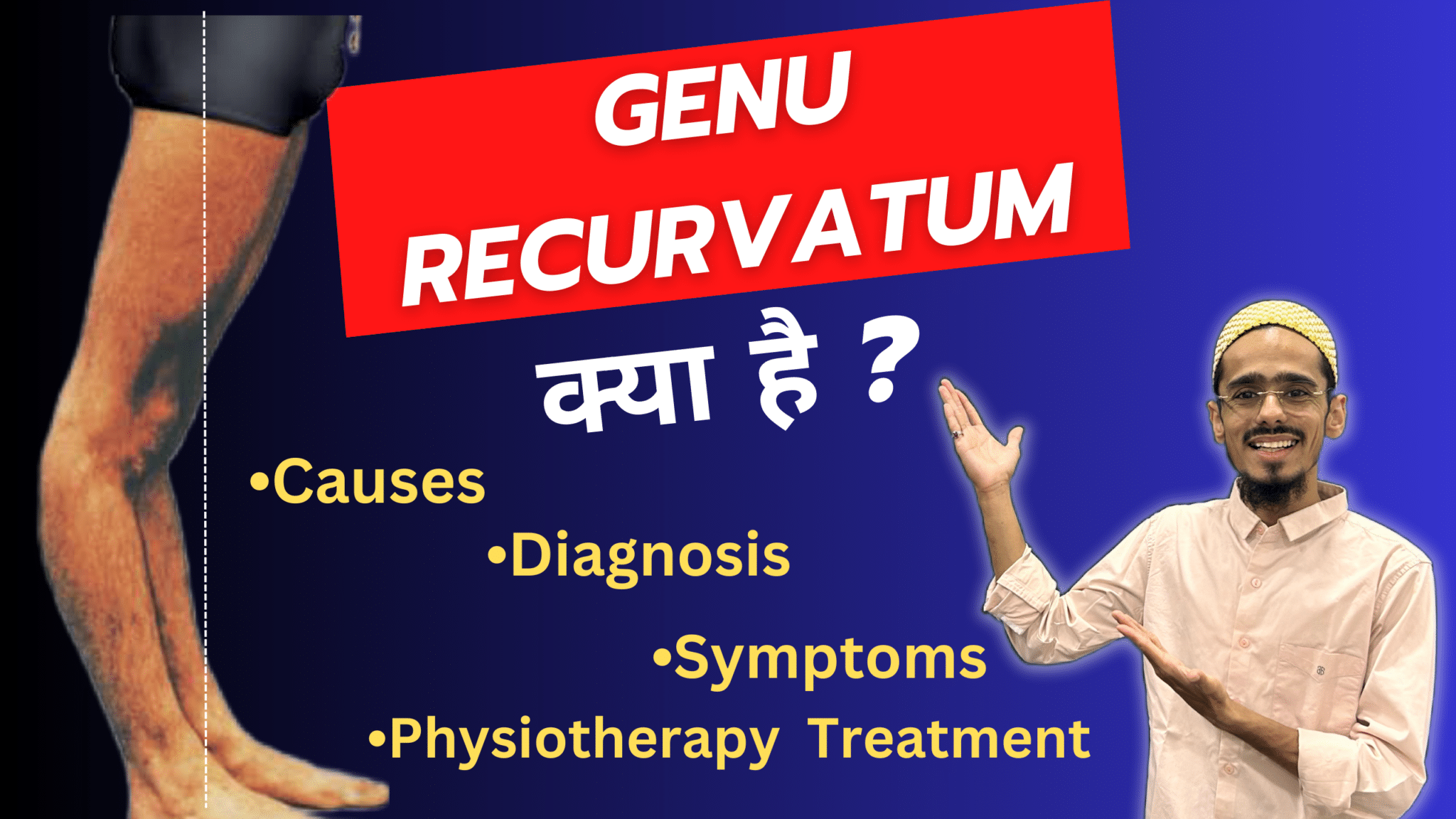Genu recurvatum ?
In Genu recurvatum hyperextension of the knee will occur , It is a condition in which excessive backward bending of the knee joint.
It is the opposite of genu flexum where the knee is unable to fully extend and remains in a bent position.
In genu recurvatum the knee joint extends beyond its normal range of motion resulting in the leg appearing to be hyperextended or “bowed back.”
This condition can be cause by various factors including:
Ligament laxity:
Weakness or looseness of the ligaments that support the knee joint can contribute to genu recurvatum. This may be due to congenital or acquired through injuries or repetitive stress on the knee.
Muscle imbalance:
Imbalances in the muscles around the knee joint can lead to abnormal joint mechanics and result in hyperextension. Weakness or tightness in specific muscle groups, such as the quadriceps or hamstrings, can contribute to this imbalance.
Joint hypermobility:
Some individuals naturally have more mobile joints, including the knee joint. This increased joint laxity can predispose them to developing genu recurvatum.
Previous injuries:
Traumatic injuries to the knee, such as ligament sprains, can damage the structures that provide stability to the joint.
If these injuries are not properly rehabilitate they can contribute to the development of hyperextension.
Genu recurvatum Symptoms
The symptoms associated with genu recurvatum may include knee pain, instability, difficulty with walking or standing for extended periods, and an abnormal gait pattern.
In some cases, individuals with this condition may be at a higher risk of sustaining knee injuries, such as ligament tears or dislocations.
Genu recurvatum Diagnosis
The diagnosis of genu recurvatum typically involves a thorough physical examination, medical history review and potentially additional diagnostic tests.
Here are some steps and considerations involved in diagnosing genu recurvatum:
Genu recurvatum Physical examination:
A doctor will assess the alignment, range of motion, and stability of your knees.
They will observe the posture and gait, looking for any signs of hyperextension or instability during movements.
They may also palpate the knee joint to identify any areas of tenderness or swelling.
Medical history:
The healthcare professional will inquire about your symptoms, the duration and progression of the condition
Any previous knee injuries or surgeries, and any other relevant medical conditions.
This information helps in understanding the potential underlying causes of genu recurvatum.
Range of motion assessment:
The range of motion of your knee joint will be measure to determine the degree of hyperextension.
A goniometer, a device use to measure joint angles may be utilize for this purpose.
Genu recurvatum is diagnose when the knee extends beyond its normal range, usually beyond 5 degrees of hyperextension.
Imaging tests for genu recurvatum:
X-rays may be advice to evaluate the bony structures of the knee joint and identify any structural abnormalities or previous injuries.
Magnetic resonance imaging (MRI) or ultrasound may be utilize to assess the soft tissues.
such as ligaments, tendons, and muscles, for any damage or laxity that could be contributing to the hyperextension.
Additional assessments:
Depending on the suspected underlying cause, additional tests or consultations may be necessary.
For example if ligamentous laxity is suspected, a specialized test called the Lachman test or anterior drawer test may be performed to assess the integrity of the knee ligaments.
genu recurvatum gait – It is essential to consult with your Doctors , such as an orthopedic specialist or physiotherapist , for an accurate and appropriate diagnosis .
They will evaluate your specific symptoms perform the necessary examinations and recommend appropriate treatment options based on the underlying cause and severity of your condition.
genu recurvatum Treatment
The treatment depends on the underlying cause, the severity of the condition and the individual’s specific needs.
Here are some common treatment approaches:
Physical therapy :
Physical therapy is often the first line of treatment for genu recurvatum.
A physical therapist will design a tailored exercise program to address muscle imbalances, improve joint stability and correct any faulty movement patterns.
Strengthening exercises for the quadriceps, hamstrings, and other muscles around the knee joint can help improve joint alignment and reduce hyperextension.
Stretching exercises may also be advice to improve flexibility.
Bracing or orthotic devices for genurecurvatum:
In some cases a knee brace or orthotic device may be recommend to provide external support and limit hyperextension of the knee.
These devices can help stabilize the joint and prevent excessive backward bending during movement.
They may be particularly beneficial during physical activities or sports.
Activity modification in genurecurvatum :
Modifying activities that exacerbate the condition or put excessive stress on the knee joint can be helpful.
Avoiding high-impact activities, such as jumping or running on hard surfaces, may reduce strain on the knee.
Low-impact exercises such as swimming or cycling, can be beneficial for maintaining cardiovascular fitness without placing excessive stress on the joint.
Manual therapy genurecurvatum :
Manual therapy techniques, such as joint mobilization or soft tissue mobilization, will be use by a physiotherapist to improve joint alignment and reduce muscle imbalances in the joint or in surrounding region.
These techniques can help restore normal joint mechanics and reduce hyperextension.
Assistive devices for genurecurvatum :
Assistive devices such as canes or walkers may be recommend for individuals with severe genu recurvatum or those who have difficulty walking or maintaining balance.
Genu recurvatum Surgical intervention :
In rare cases where conservative measures fail to provide sufficient relief or when there is an underlying structural problem, surgical intervention may be consider.
Surgical options may include ligament reconstruction, tendon lengthening or transfer, or osteotomy (bone realignment).
These procedures are typically reserve for severe cases and require thorough evaluation and discussion with an orthopedic surgeon.
It is important to consult with your Doctors such as an orthopedic specialist or physiotherapist to determine the most appropriate and accurate treatment plan for genu recurvatum condition
Based on your specific condition and needs. They will provide personalized recommendations and guidance throughout the treatment process.
